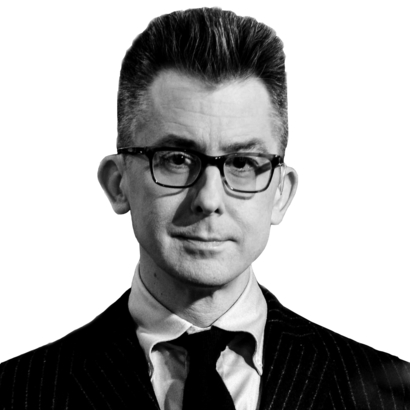Next to Robert Frank’s The Americans, there may be no book of midcentury American photography more influential than The Bikeriders, Danny Lyon’s landmark work from 1968. It’s not just the unforgettable photographs, which focus on the Chicago Outlaws Motorcycle Club; it’s also the text that accompanies them—intimate, revealing interviews with the riders and their women that Lyon, a twentysomething armed with nothing but a Rolleiflex, a Nikon, and a seven-pound reel-to-reel tape recorder, captured during the three years he spent among the Outlaws.
The book reveals the inner life of a subculture of outsiders that few people had seen up close before that time, and it proved instrumental in inspiring a new generation of photojournalism, one that blended immersive, New Journalism–like reporting with bold, documentary-style shooting. The result was gritty yet humane black-and-white shots that, like Walker Evans’s Depression-era photos in Let Us Now Praise Famous Men, rose to the level of art. Almost 60 years later, Lyon’s taut, 128-page book still vibrates with the propulsive power of a film.
No wonder, then, that Hollywood has finally succeeded in adapting the book into a movie of the same name, starring Tom Hardy, Austin Butler, Jodie Comer, and Mike Faist (as Lyon, and, lately, of Challengers), and written and directed by Jeff Nichols.
Perhaps best known for Mud, which stars Matthew McConaughey, Nichols discovered the book in 2003 and was immediately transfixed by it. “The photographs are so undeniable,” Nichols says. “I had grown up in Little Rock and been in the punk scene down there in the 90s. When I looked at his photographs, I saw something similar. But more complicated, and more dangerous. They stuck with me.”
Gritty yet humane black-and-white shots that, like Walker Evans’s Depression-era photos in Let Us Now Praise Famous Men, rose to the level of art.
Across the ensuing years, Nichols would turn the images and the accompanying interviews over and over in his mind, wondering if there was a way to bring that world to life on-screen. The question was how to find a way in, how to structure a story. In the end, he spent more than 10 years thinking about the book, wondering if it would even be possible to adapt it, before finally reaching out to Lyon, who invited Nichols down to his home in New Mexico to talk.
It was there that Nichols learned how Lyon came to make the book. How, even before Lyon created this masterpiece, he had already achieved stature for his documentary work when, at the age of 19, he went to the Deep South to document efforts to defeat segregation.

Down South, Lyon befriended civil-rights activist John Lewis, and they became roommates. Lyon was tapped to be the official photographer of the Student Nonviolent Coordinating Committee and went on to capture some of the most indelible images of that moment in American history.
In 1963, looking for a change, Lyon went to Chicago, where he discovered the Outlaws. He became fascinated and decided that in order to document them freely, he’d have to join the club. He would spend the next four years with them.
Lyon eventually gave Nichols permission to adapt the material, and it was during lockdown that Nichols began to actively work on a script. After speaking with Lyon, Nichols knew he wanted to have the film told by a narrator, “in order to convey the density of the book,” and realized the narrator should not be Lyon but a woman. Specifically, Kathy Bauer (played by Comer)—a girlfriend of one of the Outlaws, she is not just a recurring, striking presence in the photographs but a mesmerizing voice in the transcripts, startling with her perspective and insights.
It was Kathy’s voice—which Nichols heard on one of Lyon’s original audiotapes—that made him believe she was the one to tell the story. “I just immediately fell in love with her voice and personality,” Nichols says, “right down to her Chicago accent. And of course to have the woman’s eye on this very male world, that was really something. The men can’t have the introspection she has. She’s an insider because she’s married into it, but she’s also an outsider. I’m fascinated by her.”

One of the pleasures of the film, for those who know Lyon’s book well, is checking off scenes that are cinematic interpretations of the photos, such as those of the dirt-track race or the funeral of a member. One of the best moments comes when Butler is seen riding solo across a bridge. It’s a moment based on Crossing the Ohio River, Louisville, one of Lyon’s most replicated images yet one that, like so many of Lyon’s photographs, got interpreted anew here.
“What I love about that image of Danny’s,” Nichols says, “is that the guy is turning to look back to see if someone is gaining on him, but his face is hidden. You can’t see him. He’s turning away from the camera. Now, when Austin and I went to shoot that scene, we had never talked about the image. Yet when it came time for him to turn and look over his shoulder, he instinctively turned his face towards the camera.” Nichols laughs. “Which is what you want in a movie. To see the star.”
The Bikeriders is in theaters now
Michael Hainey is a Writer at Large at AIR MAIL










